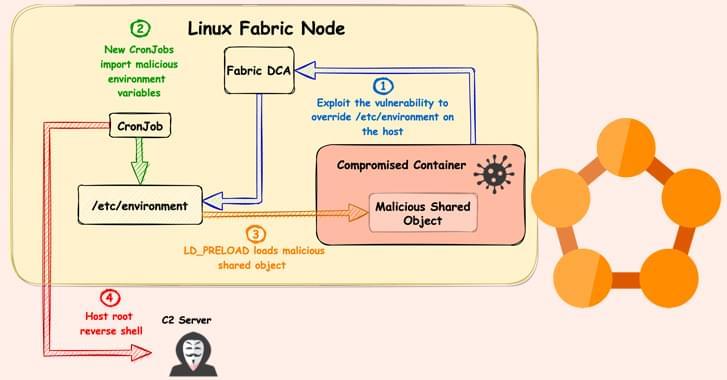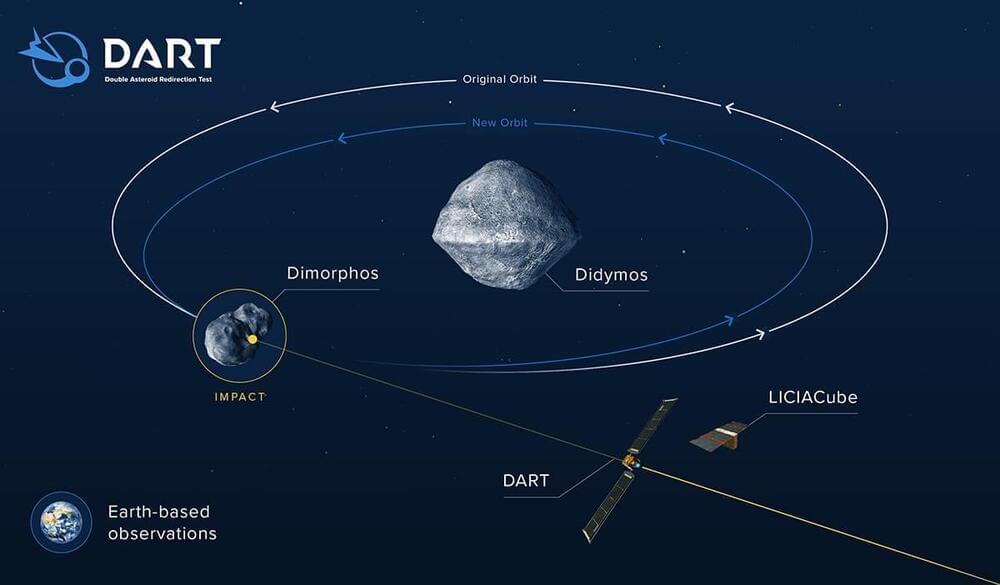A former Canadian government employee pleaded guilty in the U.S. to charges related to his involvement with the NetWalker ransomware syndicate.





In the future, a woman with a spinal cord injury could make a full recovery; a baby with a weak heart could pump his own blood. How close are we today to the bold promise of bionics—and could this technology be used to improve normal human functions, as well as to repair us? Join Bill Blakemore, John Donoghue, Jennifer French, Joseph J. Fins, and P. Hunter Peckham at “Better, Stronger, Faster,” part of the Big Ideas Series, as they explore the unfolding future of embedded technology.
This program is part of the Big Ideas Series, made possible with support from the John Templeton Foundation.
Visit our Website: http://www.worldsciencefestival.com/
Like us on Facebook: https://www.facebook.com/worldscience… us on twitter: https://twitter.com/WorldSciFest Original Program date: May 31, 2014 Host: Bill Blakemore Participants: John Donoghue, Jennifer French, Joseph J. Fins, P. Hunter Peckham Re-engineering the anatomy of the “Vitruvian Man” 00:00 Bill Blakemore’s Introduction. 2:06 Participant introductions. 4:27 What is FES? (Functional Electrical Stimulation) 6:06 A demonstration with FES and without. 10:06 How did you test FES systems? 14:16 Jen French the first bionic pioneer. 16:40 What was the journey like from injury to today? 18:35 A live demonstration of FES. 20:40 What is BrainGate? 27:55 What is the potential for this technology? 37:00 When will this technology be publicly available? 40:50 A cell phone app to drink water or stand up? 44:55 Jen French would be the first to try new technology. 50:39 What is the history of altering the human brain? 1:00:57 The move from chemical to electrical medical care. 1:05:40 The challenge of what is going to drive the delivery of care to groups in need. 1:11:36 Can these devices be implanted without surgery? 1:18:13 What field needs the most funding for this to become available to everyone? 1:19:40 What are the numbers of people who can use this technology? 1:23:44 Why can’t we use stem cells to reconnect human spinal tissue? 1:25:37 What is the collaboration level between institutions? 1:29:16 How far away are we from using brain waves to control objects and communicate with each other? 1:30:20
Follow us on twitter: https://twitter.com/WorldSciFest.
Original Program date: May 31, 2014
Host: Bill Blakemore.
Participants: John Donoghue, Jennifer French, Joseph J. Fins, P. Hunter Peckham.
Re-engineering the anatomy of the “Vitruvian Man” 00:00.
Bill Blakemore’s Introduction. 2:06
For decades, biologists have read and edited DNA, the code of life. Revolutionary developments are giving scientists the power to write it. Instead of tinkering with existing life forms, synthetic biologists may be on the verge of writing the DNA of a living organism from scratch. In the next decade, according to some, we may even see the first synthetic human genome. Join a distinguished group of synthetic biologists, geneticists and bioengineers who are edging closer to breathing life into matter.
This program is part of the Big Ideas Series, made possible with support from the John Templeton Foundation.
Original Program Date: June 4, 2016
MODERATOR: Robert Krulwich.
PARTICIPANTS: George Church, Drew Endy, Tom Knight, Pamela Silver.
Visit our Website: http://www.worldsciencefestival.com/
Like us on Facebook: https://www.facebook.com/worldsciencefestival.
Follow us on twitter: https://twitter.com/WorldSciFest.
Synthetic Biology and the Future of Creation 00:00.
Participant Intros 3:25
Consciousness is a terrible curse. Or so says a character in screenwriter/director Charlie Kaufman’s Being John Malkovich. Part theater of the absurd and part neuroscience fiction, the Oscar-winning filmmaker’s work captures the splintering between what we perceive and what we feel as our brains grapple with multiple layers of reality. Neuroscientist Giulio Tononi, one of the world’s leading sleep researchers, casts new light on the science of the mind, probing where and how consciousness is generated in the brain. Watch this spellbinding conversation between Kaufman, Tononi, and moderator Alan Alda as they explore and explain the art, science, and mystery of consciousness.
The World Science Festival gathers great minds in science and the arts to produce live and digital content that allows a broad general audience to engage with scientific discoveries. Our mission is to cultivate a general public informed by science, inspired by its wonder, convinced of its value, and prepared to engage with its implications for the future.
Visit our Website: http://www.worldsciencefestival.com/
Like us on Facebook: https://www.facebook.com/worldsciencefestival.
Follow us on twitter: https://twitter.com/WorldSciFest.
Original Program Date: June 5, 2010
MODERATOR: Alan Alda.
PARTICIPANTS: Charlie Kaufman, Giulio Tononi.
Alan Alda Introduction 00:00
Participant Introductions 03:45

A giant asteroid’s impact is considered the likely cause of the mass extinction of the dinosaurs almost 66 million years ago.
While there is no potential harm from an asteroid on the Earth at present, it is still important to keep our defense system ready in order to prevent catastrophic consequences such as impacts by deflecting trajectories of asteroids if one is ever discovered.
With this aim, NASA launched the Double Asteroid Redirection Test (DART) mission, the world’s first planetary defense test mission, last November. DART is the first-ever mission dedicated to investigating and demonstrating one method of asteroid deflection by changing an asteroid’s motion in space through kinetic impact. In summary, it is to collide with an asteroid and deflect it from its orbit in order to provide valuable information for the development of such a planetary defense system.
This episode focuses on many of the problems with travel between stars at relativistic velocities, like collision avoidance, radiation, ship geometry, armor, and point-defense.
We will also look at some of the possible engine types and discuss realistic maximum speeds they offer.
Visit our Website: http://www.isaacarthur.net.
Join the Facebook Group: https://www.facebook.com/groups/1583992725237264/
Support the Channel on Patreon: https://www.patreon.com/IsaacArthur.
Visit the sub-reddit: https://www.reddit.com/r/IsaacArthur/
Listen or Download the audio of this episode from Soundcloud: https://soundcloud.com/isaac-arthur-148927746/interstellar-travel-challenges.
Cover Art by Jakub Grygier: https://www.artstation.com/artist/jakub_grygier.
Special Thanks to Liam Davis of Lombus, for use of the song “Hydrogen Sonata”, available here:
https://lombus.bandcamp.com/album/space-engine-ep
Cortical Labs takes neurons from mice and put them on chips, then teaches them how to play ping pong.
Can you make smarter AI systems by combining biological neurons with silicon chips? In this episode of The AI Show with John Koetsier, we’re going to chat with Hon Weng Chong, CEO and co-founder of Cortical Labs and Andy Kitchen, the company’s CTO, about biological AI: mixing real brain cells with silicon computer chips.